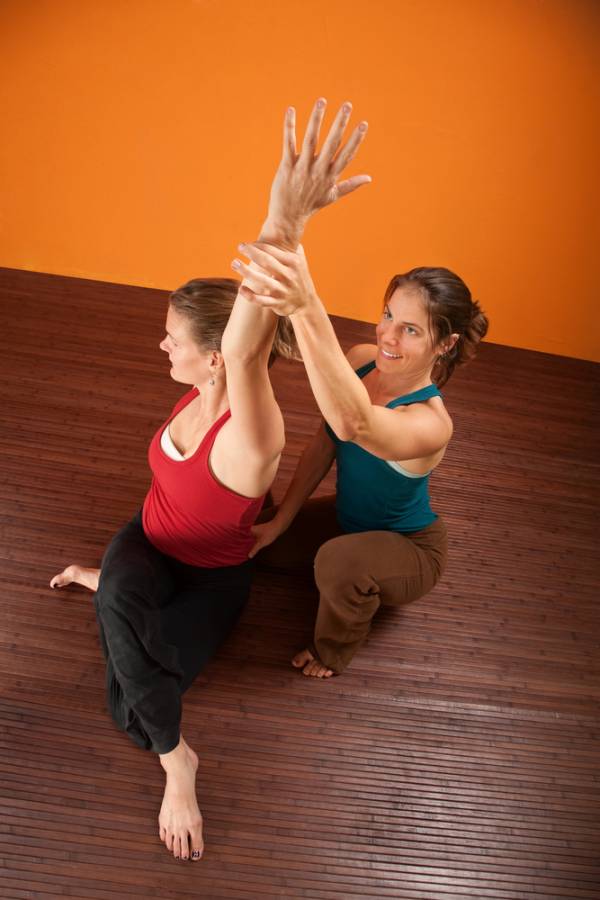In grappling, weightlifting, and many other athletic endeavors, you can derive great benefit from a group class. Feedback, support, slightly different approaches to a given movement or technique, and, in grappling, the opportunity to train with multiple different bodies are just a few of the things a group class has to recommend it.
Of course, there’s also much to be said for one-on-one interaction with a coach. This is why coaches offer private lessons, and it’s also why students take advantage of them. I have both provided and taken private lessons, and as with anything else, I’ve found that a little planning on the student’s part can maximize the benefit of the experience.
In addition to being an opportunity to have an expert’s full attention, it’s also an opportunity for the student to “own” his or her training, to step up and start to take responsibility for progress. Read on for some suggestions about how to make the most of a private lesson.
1. Bring a notebook.
Whether you still use a pen and paper or your notebook is of the computer variety, bring something on or into which you can jot notes. Some instructors who give privates will allow you to film techniques. This is ideal, but even writing down a few key words will jog your memory later. This is your time, so most instructors will not mind if you take some of it to solidify your learning.
2. Bring a friend.
In grappling, students sometimes arrange what are known as “semi-privates,” where two or even more people attend a session. This way, the instructor can execute techniques on the other person so you can see the details, and then you can do the same so the instructor can observe and make corrections. In other domains, a friend might be able to take the video or help jot notes. Always check first with the instructor if you want to bring a friend, as in some cases that will change the cost of the lesson.
3. Come prepared.
If the instructor asks you what you need to work on, probably the last thing he or she wants to hear in response is, “Everything.” And this response is not consistent with the idea of owning your training anyway. Especially if this person is not your usual instructor and doesn’t know your strengths and weaknesses, consider being proactive by bringing a short list of areas you’d like to focus on. When I go for a private lesson, I usually identify one set of go-to moves and one set of needs-a-life-raft moves. In other words, I’ll explain to the instructor that I feel comfortable and skilled (relatively speaking) with x set of techniques and that I feel uncomfortable and hopeless with y set of techniques. This way, I can build on my go-tos and at least start to work on a glaring weakness.
4. Be willing to chuck it and go in a completely different direction.
 The above being said, different instructors and coaches have different preferences. So while it is important to come with your own game plan, it may also be the case that the person who is providing you the private lesson wants to have more say in terms of the content. Perhaps the instructor has observed or trained with you enough to have opinions about something you need to work on. In these cases, defer to the instructor. The work you have done in preparation is not in vain, either because you may get some time at the end to ask your questions, or because you have taken the time to begin to develop your own personal game plan – to own your training. Or both.
The above being said, different instructors and coaches have different preferences. So while it is important to come with your own game plan, it may also be the case that the person who is providing you the private lesson wants to have more say in terms of the content. Perhaps the instructor has observed or trained with you enough to have opinions about something you need to work on. In these cases, defer to the instructor. The work you have done in preparation is not in vain, either because you may get some time at the end to ask your questions, or because you have taken the time to begin to develop your own personal game plan – to own your training. Or both.
5. Repeat, repeat, repeat.
At the end of the lesson, ask the coach to briefly go through all the things you covered. In grappling, a private lesson frequently covers sequences of movements, where one builds on and/or leads to the others. Having the instructor take five minutes at the end of the lesson to review everything will give you one last chance to jot notes and to see the movements in their broader context.
6. Have a good attitude.
This one should go without saying. You’ve made a special effort to arrange time with this person and benefit from his/her expertise. Be happy about it! And be “normal.” It can be easy to feel intimidated if the person you’re learning from is highly accomplished. But now is not the time to give into that star-struck feeling. Now is the time for collaboration, enthusiasm, respect, and engagement.
Have you ever given or received a private lesson? What, to you, is the single most important thing to do to ensure a positive experience? Post your suggestions to comments.
Photos courtesy of Shutterstock.






